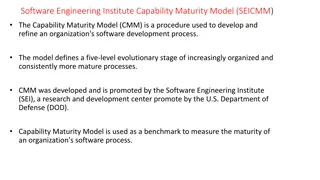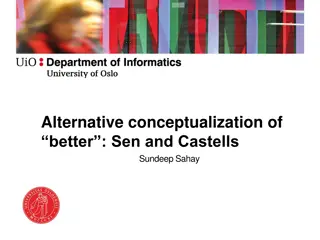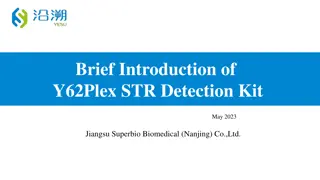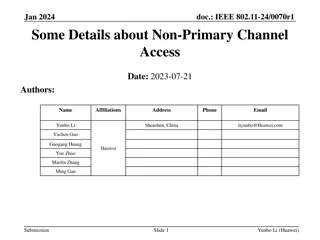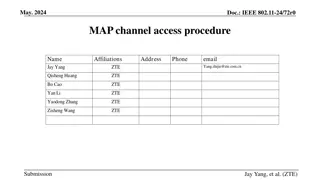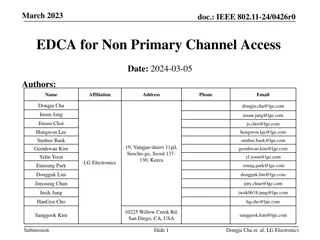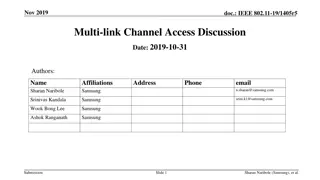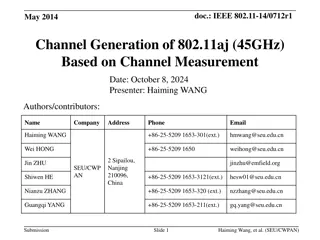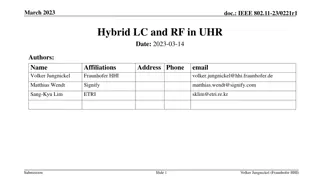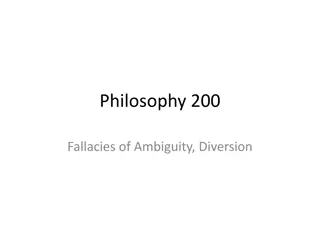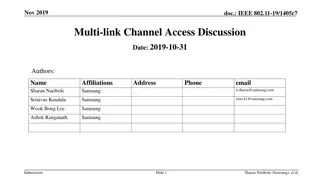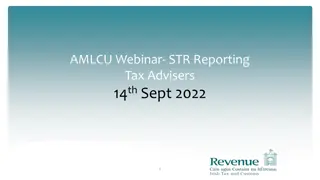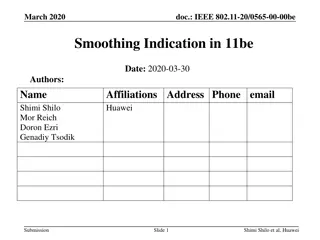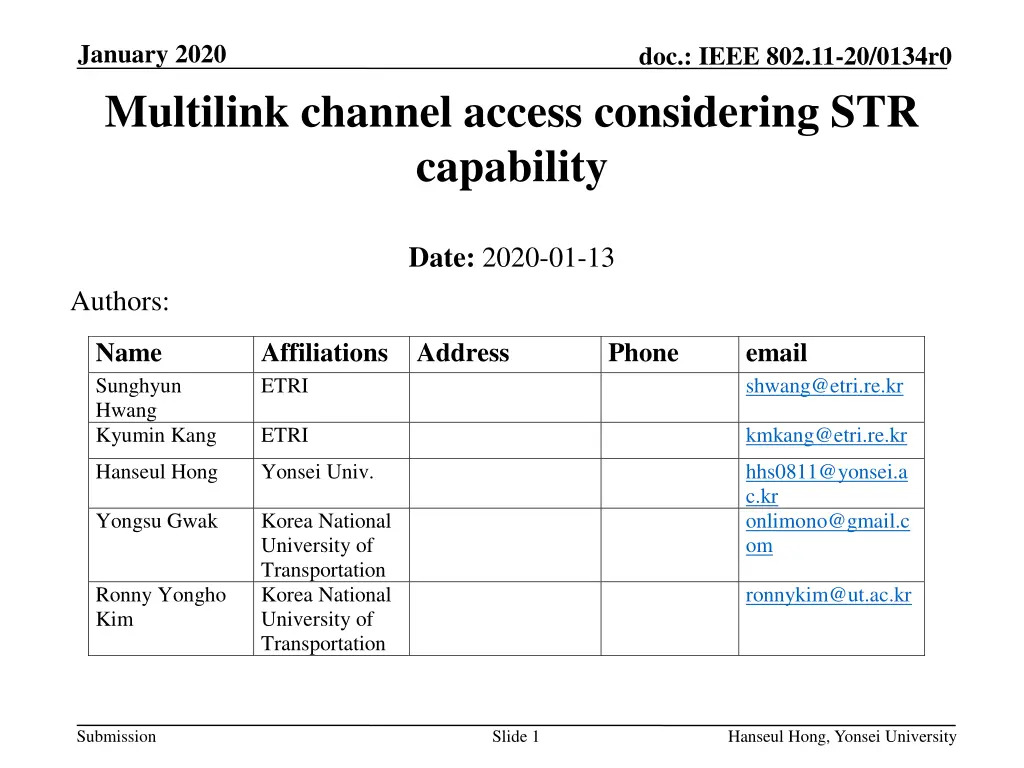
Understanding Multi-Link Channel Access in IEEE 802.11-20/0134r0 Document
Explore the complexities of multi-link channel access considerations in the January 2020 IEEE document, focusing on the challenges of non-Spatial Reuse (STR) capable operations and the implications for simultaneous transmission and reception. Delve into the nuances of asynchronous and synchronous multi-link operations as discussed by authors from ETRI, Yonsei University, and Korea National University of Transportation.
Download Presentation

Please find below an Image/Link to download the presentation.
The content on the website is provided AS IS for your information and personal use only. It may not be sold, licensed, or shared on other websites without obtaining consent from the author. If you encounter any issues during the download, it is possible that the publisher has removed the file from their server.
You are allowed to download the files provided on this website for personal or commercial use, subject to the condition that they are used lawfully. All files are the property of their respective owners.
The content on the website is provided AS IS for your information and personal use only. It may not be sold, licensed, or shared on other websites without obtaining consent from the author.
E N D
Presentation Transcript
January 2020 Multilink channel access considering STR capability doc.: IEEE 802.11-20/0134r0 Date: 2020-01-13 Authors: Name Sunghyun Hwang Kyumin Kang Affiliations Address ETRI Phone email shwang@etri.re.kr ETRI kmkang@etri.re.kr Hanseul Hong Yonsei Univ. hhs0811@yonsei.a c.kr onlimono@gmail.c om Yongsu Gwak Korea National University of Transportation Korea National University of Transportation Ronny Yongho Kim ronnykim@ut.ac.kr Submission Slide 1 Hanseul Hong, Yonsei University
January 2020 doc.: IEEE 802.11-20/0134r0 Introduction The multi-link operation includes the operation of non- STR capable operation[1] The AP MLD s multi-link operation with non-STR capability should be carefully considered[2] The channel access method for non-STR multi-link should be clarified This presentation continue to discuss multi-link channel access operation Submission Slide 2 Hanseul Hong, Yonsei University
January 2020 Recap: multi-link operation and channel access doc.: IEEE 802.11-20/0134r0 Asynchronous multi-link operation: When simultaneous TX on one link with RX on other links is supported Tx PPDU1 BA Rx Busy STA Link 1 Busy Tx PPDU2 BA Rx STA Link 2 Synchronous multi-link operation: Same time of Tx-Rx Similar to the 80+80 operation or preamble punctured operation Tx PPDU1 BA Rx STA Link 1 Busy Tx PPDU2 BA Rx STA Link 2 Submission Slide 3 Hanseul Hong, Yonsei University
January 2020 doc.: IEEE 802.11-20/0134r0 Regarding AP MLD s STR capability When AP MLD cannot simultaneously transmit and receive using some of enabled links, following problem may be occurred as in [2] Assumption: Link 2 and Link 3 generates high IDC interference: Simultaneous transmission on link 2 and reception on link 3 is unavailable Non-AP MLD 1 enables Link 1 and Link 2: performs asynchronous operation Non-AP MLD 2 enables Link 2 and Link 3: performs asynchronous operation One legacy STA is associated with AP in Link 2 High IDC interference STR is unavailable Upper Layer AP MLD Lower MAC (2.4 GHz) Lower MAC (5 GHz) Lower MAC (6 GHz) Lower MAC (2.4 GHz) Lower MAC (5 GHz) Lower MAC (2.4 GHz) Lower MAC (6 GHz) Lower MAC (2.4 GHz) Non-AP MLD 1 Non-AP MLD 2 Legacy STA Upper Layer Upper Layer Upper Layer Submission Slide 4 Hanseul Hong, Yonsei University
January 2020 doc.: IEEE 802.11-20/0134r0 Regarding AP MLD s STR capability Since simultaneous transmission in Link 2 and reception in Link 3 is not available and vice versa, AP MLD may not be able to transmit the BlockAck to MLD 2 during the reception of PPDU from MLD 1 in Link 2 AP MLD may not be able to transmit the BlockAck to legacy STA during the reception of PPDU from MLD 2 in Link 3 Rx PPDU1 from MLD 1 BA Tx Busy AP Link 1 May not be transmitted Rx PPDU1 from Legacy STA Rx PPDU2 from MLD 1 BA Tx BA Tx AP Link 2 Rx PPDU2 from MLD 2 Rx PPDU1 from MLD 2 BA Tx BA Tx Busy AP Link 3 May not be transmitted Submission Slide 5 Hanseul Hong, Yonsei University
January 2020 Options for supporting Multi-link with non- STR capable links doc.: IEEE 802.11-20/0134r0 Option 1: Define primary link for channel access among interfered links The EDCA operation is allowed only in the primary link The association of legacy STAs is allowed only in the primary link The channel access in other links without primary link operation is not allowed Option 2: AP MLD should be STR capable in all enable links Submission Slide 6 Hanseul Hong, Yonsei University
January 2020 Synchronous channel access for non-STR capable non-AP MLD doc.: IEEE 802.11-20/0134r0 For non-STR capable non-AP MLDs, the basic operation of multi-link is based on synchronous operation Transmission time of each link is aligned The transmission using only one link may be permitted During the transmission in one link, the transmission using the other links is not permitted The transmission using one link in any link is TBD Channel access method is TBD Tx PPDU1 Tx PPDU1 BA Rx STA Link 1 Busy Tx PPDU2 BA Rx Busy No transmission STA Link 2 Submission Slide 7 Hanseul Hong, Yonsei University
January 2020 doc.: IEEE 802.11-20/0134r0 Semi-synchronous multi-link operation To enhance the latency of multi-link operation in case of high IDC coexistence, semi-synchronous multi-link is available [3][4][5] Based on independent EDCA backoff in each link May need to define the backoff operation in each link PD in link 2 is not available during the Tx in link 1 Tx PPDU1 BA Rx STA Link 1 Tx PPDU2 BA Rx Busy STA Link 2 Submission Slide 8 Hanseul Hong, Yonsei University
January 2020 doc.: IEEE 802.11-20/0134r0 Channel access operation for semi- synchronous operation As in [6], IDC interference level may be classified to two cases The interference prevents the reception of Data frame in another link The interference ceases backoff procedure of another link Tx PPDU1 BA Rx STA Link 1 Busy Busy? STA Link 2 Appropriate sensing level of other links is needed[4] May define new sensing level in case of transmission on link 1 Submission Slide 9 Hanseul Hong, Yonsei University
January 2020 doc.: IEEE 802.11-20/0134r0 Channel access operation for semi- synchronous operation The channel sensing period should be defined in case of unavailable PD operation PD in link 2 is not available during the Tx in link 1 The remained NAV operation may be performed in Link 2 For new busy indication, the sensing period should be defined In the baseline, EIFS period is used to protect ACK frame from hidden node, in case of frame decoding error Definition of backoff operation only using ED should be defined Tx PPDU1 BA Rx STA Link 1 AIFS? EIFS? Busy Busy STA Link 2 Submission Slide 10 Hanseul Hong, Yonsei University
January 2020 doc.: IEEE 802.11-20/0134r0 Conclusion In this presentation, several issues on channel access with STR capabilities are discussed For AP MLD, non-STR capabilities in some links may cause transmission problem of ACK frame May need to define a dedicated link for EDCA operation May mandate the AP s STR capability The channel access for non-AP MLD without STR capabilities may performed with synchronous or semi-synchronous operation For synchronous operation, the fair and efficient channel access method should be defined For semi-synchronous operation, the sensing level and sensing period of the other links should be defined Submission Slide 11 Hanseul Hong, Yonsei University
January 2020 doc.: IEEE 802.11-20/0134r0 Reference [1] 11-19/1262r6 Specification Framework for Tgbe [2] 11-19/1405 Multi-Link Operation Channel Access Discussion, Sharan Naribole (Samsung) [3] 11-19/1546 Legacy Performance Impact on Multi-link Operation, Yongho Seok (MediaTek) [4] 11-19/1916 MLO-Asynch-Qsynch-Synch, Matthew Fischer (Broadcom Inc) [5] 11-19/1917 Considerations for multi-link channel access without simultaneous TX/RX capability, Insun Jang (LG Electronics) [6] 11-19/1541 Performance aspects of Multi-link operations with constraints, Dmitry Akhmetov (Intel) Submission Slide 12 Hanseul Hong, Yonsei University



